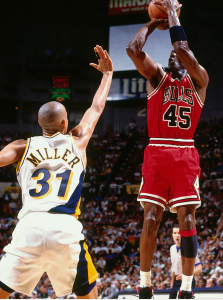
Part II: Get Buckets
Financial PlanningJan 19, 2022
In Part I of our Taking Inventory Series, we outlined how the first step in accomplishing your goals for tomorrow must involve taking an honest assessment of where it is you stand today. Once you have done that you can move to the next step, which is determining how to best allocate your money going forward. Capital allocation decisions should be guided by an active and objective approach to identify, analyze, execute, and evaluate your options in order to maximize your return on investment (R.O.I.). At least, that is how someone who takes themselves too seriously would put it. For the rest of us, this really just means now that you understand your situation better, you can consider where to put your money so you accomplish your goals and get the most “bang for your buck”.
One of the single biggest mistakes people make is not being strategic in utilizing tools and options that may be available to help their money work harder for them. Understanding the best types of accounts, tax vehicles, investment strategies and estate planning tools to employ on your behalf is the next step in getting more organized and setup for financial success. At this stage we are ditching the Yosemite Sam approach of shooting from the hip and hoping for the best. Going back to the idea of viewing yourself like a business from Part I, you need to have a process to reorganize your inventory to be more efficient with your cashflow.
Given that we are in the heart of basketball season, let’s use it as a helpful analogy for the “bucket approach”. At any level, the most successful teams are usually the ones that have the best offensive and defensive systems that fit their personnel. Talent is important, but a repeatable system where specific roles are assigned and well understood will lead to great outcomes more often. The bucket approach brings this concept to one’s personal finances and asset allocation. It assigns specific functions to various “buckets” of your money to fit different needs and time horizons. It is a straightforward way to think about how to allocate your earnings in a way that reduces anxiety and gives you peace of mind. It creates structure now for freedom later.
This approach helps insulate people from poor decision-making in times of stress and market volatility. While everyone’s situation is different, it is a framework that can help anyone. Big returns sound nice, but the risk involved in achieving them means you should take them in the right places.
Rather than focusing on picking stocks or big returns in the short-term, it should instead be about being financially durable and independent over the long-term.
The bucket approach is a way to create a household balance sheet that allows your head to hit the pillow each night knowing you are financially secure. You also won’t have to worry as much about what the market is doing day to day or month to month.
The root of the idea goes back to the old cliche about property: “location, location, location”. In other words, while asset allocation (what you invest your money in) is important, asset LOCATION (where you invest your money) is equally important. What does this mean? When bucketing assets using different time frames, the types of vehicles and strategies you should utilize will change. To continue with the basketball analogy, we’ll use a timeframe equivalent to each shot’s distance from the hoop. Just like basketball teams want to be efficient in their shot selection, so should we in where we take our risk (and where we don’t).
Bucket #1: “The Lay-Up” (0-1 Years)

This should be thought of as a rainy-day fund, and so taking little to no risk with the money you allocate here makes sense. By this we mean being focused on cash and having it be accessible quickly. This ensures you have options as things come up in life.
- Should be considered a “life buffer”
- Differs depending on your own personal situation, but a good general rule is enough cash on hand to cover anywhere from 3-12 months of expenses
- Allows you to avoid getting caught needing to use debt excessively in an emergency and avoid selling investments to fund expenses
- Examples: money market funds, savings accounts
Bucket #2: “The Mid-Range” (2-10 Years)

This bucket should not have too much cash due to the dangers of inflation over time, but the risks you are taking here should be carefully understood. Liquidity should still be a priority in case your situation changes. You should have access to these funds to remain flexible.
- Invested to ensure your money’s purchasing power keeps up with inflation
- Can be invested in a combination of preservation, income, and growth strategies depending on your situation
- Examples: individual or joint investment accounts, revocable trusts, health savings accounts
Bucket #3: “The Three Ball” (10+ Years)

This should be where your retirement accounts and long-term money focused on building your wealth are positioned. It is where you should take the most risk when you are younger and adjust accordingly as you get closer to retirement. If you fund the first two buckets sufficiently, you will not have to worry as much about market cycles. You can let your assets remain uninterrupted to participate in long-term compounding. By not interrupting that process, the results have the potential to be truly remarkable.
- Should be focused on growth-oriented strategies to build long-term wealth the younger you are
- Once you build a strategy that fits your goals and personal situation you should not make frequent changes
- Examples: 401(k), Traditional IRA, Roth IRA, SEP IRA
It is important to understand the risks you are taking, and where you are taking them. Are those two factors aligned? Having an account to day trade is useful, but is that money you may need soon? What are the capital gains tax implications? Would a market sell-off keep you up at night? Are your retirement accounts invested to fit your timeline and goals? What bucket should fund a major expense like a home renovation? This approach can help you answer those questions and give you more confidence in your financial picture. By focusing on “getting buckets” now, you can make sure you’re not relying on heaving a half-court shot at the buzzer when it comes to your retirement.
Citations
Nobel laureates: Harry Markowitz, Paul Kaplan- Morningstar, July 20, 2018
Designing Your Clients Bucket Plan, Clarity 2 Prosperity, January 25th, 2021
The Bucket Investor’s Guide to Setting Asset Allocation for Retirement, Christine Benz- Morningstar, January 25th, 2021


